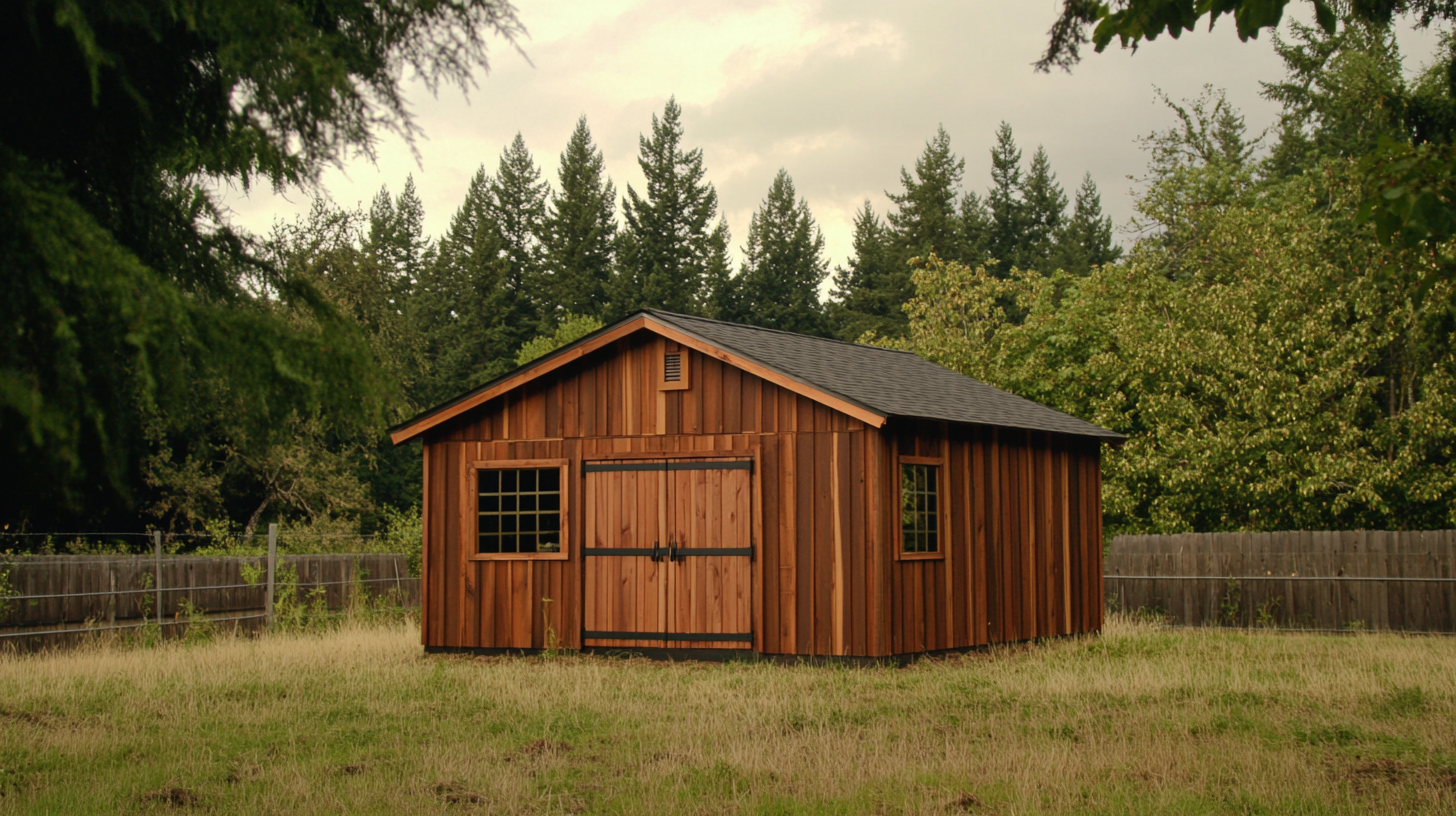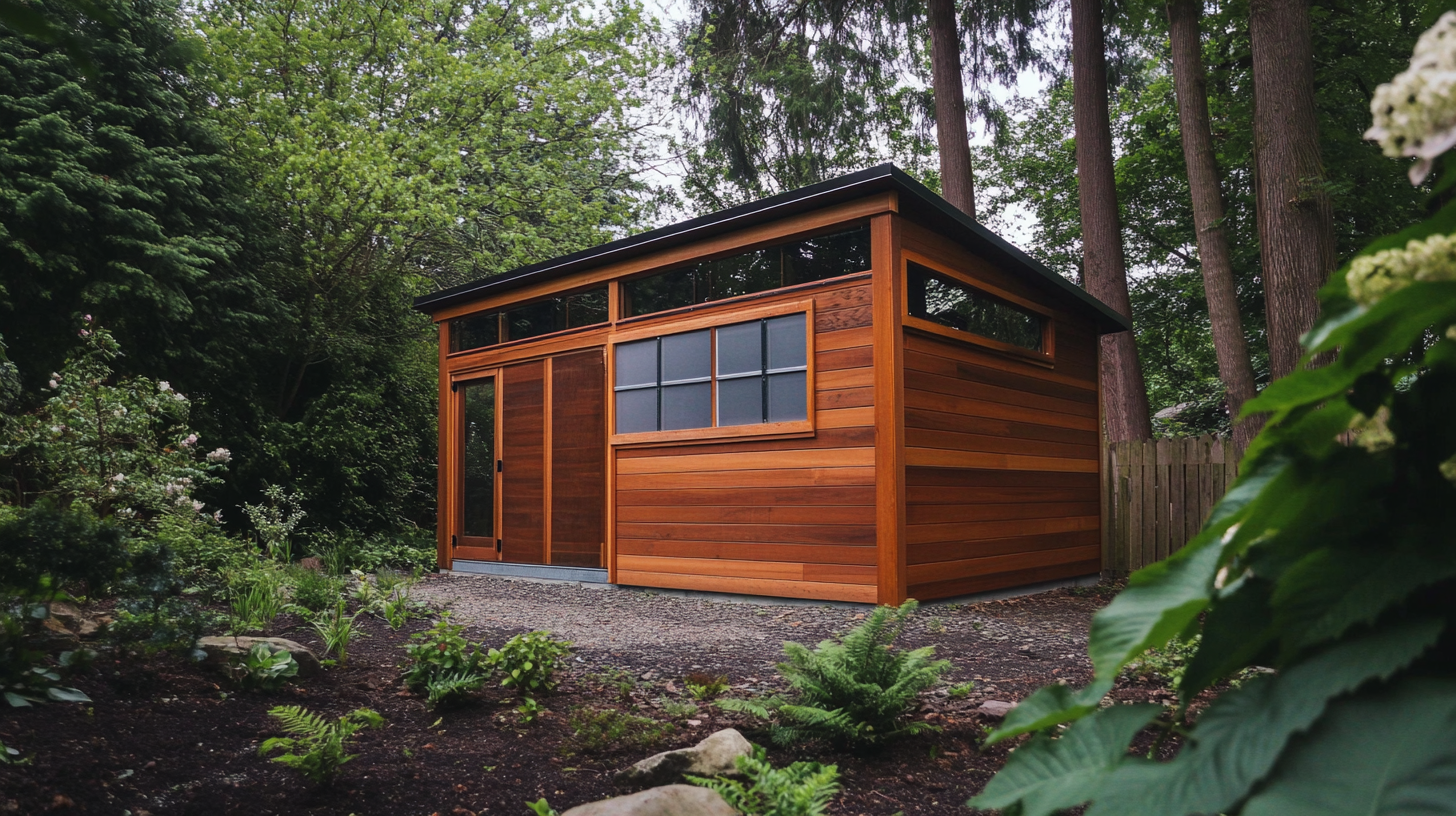Sorry, your browser is not supported. For a better experience, keep your browser up to date. Check here for latest versions
 As we delve into the world of outdoor storage solutions, the rise of the cedar shed continues to capture the attention of homeowners and industry professionals alike. In 2025, we observe not only advancements in the design and functionality of these structures but also a shift in industry trends that prioritize sustainability and aesthetic appeal. Cedar sheds are favored for their natural resistance to decay and insects, making them a long-lasting investment.
As we delve into the world of outdoor storage solutions, the rise of the cedar shed continues to capture the attention of homeowners and industry professionals alike. In 2025, we observe not only advancements in the design and functionality of these structures but also a shift in industry trends that prioritize sustainability and aesthetic appeal. Cedar sheds are favored for their natural resistance to decay and insects, making them a long-lasting investment.
However, as with any product, there are crucial production standards and potential design problems that must be addressed. This blog will explore the best options available, compare various models on the market, and highlight key considerations for selecting the perfect cedar shed for your needs, ensuring you stay ahead of the trends while making an informed decision for your outdoor space.
Cedar has long been a popular choice for shed construction, and its benefits are only becoming more evident as we approach 2025. Known for its natural resistance to decay and insects, cedar wood offers durability that outlasts many other materials. This means less maintenance and fewer replacements, making it an economical option in the long run. Additionally, the rich aroma of cedar helps keep pests at bay, enhancing the shed's functionality as a storage space.
When considering a cedar shed, it's essential to think about proper sealing to protect the wood from moisture. Applying a high-quality sealant can enhance the wood's longevity and maintain its beauty. Choosing a well-ventilated design will also prevent moisture buildup inside the shed, further preserving the integrity of the cedar.
Another tip is to select a pre-finished cedar option when possible, as this can save time during installation and ensure that the protective layers are evenly applied. Moreover, combining cedar with sustainable materials for the shed's framework can enhance its eco-friendliness, aligning with growing industry trends toward sustainability in 2025.

When it comes to choosing the perfect cedar shed, understanding the various styles available is essential to finding one that meets your specific needs. One popular option is the gable-style shed, which features a classic peaked roof. This design not only enhances the aesthetic appeal but also provides ample headroom and natural light, making it perfect for storage or a workshop. Gable sheds are versatile, accommodating everything from gardening tools to outdoor equipment.
Another style gaining traction is the lean-to shed, favored for its simplicity and compact design. This style is ideal for those with limited yard space, as it can be placed against an existing wall or fence. Lean-to sheds offer easy access and can be styled to blend seamlessly with your home’s architecture. Additionally, these sheds often come with customizable features like shelving and windows, ensuring they cater to your functional requirements.
For those seeking a more decorative option, the barn-style shed combines functionality with a rustic charm. With its distinctive double doors and lofted roof, this shed maximizes both storage space and style. Ideal for use as a playhouse or hobby space, barn-style sheds invite creativity while offering robust storage solutions. Considering these various styles will help you make an informed decision that aligns with your needs and enhances your outdoor space.
As the trend toward sustainability continues to shape our living spaces, it’s essential to explore eco-friendly alternatives to traditional cedar sheds. While cedar wood has long been favored for its durability and natural resistance to decay, there are innovative materials emerging that promise to minimize environmental impact. From reclaimed wood to bamboo and recycled metal, these sustainable options not only reduce waste but also add unique aesthetic qualities to your outdoor spaces.
Additionally, the shift towards grassless yards highlights a broader movement in landscaping that favors alternative materials. Much like how mulch and synthetic turf are transforming outdoor aesthetics, similar principles can be applied in the world of shed construction. By integrating sustainable practices—using materials like reclaimed composites or bio-based resins—homeowners can create structures that not only serve practical purposes but also contribute positively to the environment. This approach aligns with the latest sustainable technologies that prioritize innovation while reducing our carbon footprints, ensuring our outdoor investments are as green as they are beautiful.
| Material Type | Durability (Years) | Maintenance Level | Environmental Impact | Cost ($) |
|---|---|---|---|---|
| Cedar | 15-20 | Medium | Moderate | 300-500 |
| Recycled Plastic | 25+ | Low | Low | 400-700 |
| Metal | 30+ | Medium | Moderate | 500-800 |
| Bamboo | 10-15 | High | Very Low | 200-400 |
| Composite Wood | 20+ | Low | Moderate | 350-600 |
When considering outdoor storage solutions, the choice between cedar and alternative materials is crucial for budget-conscious buyers. Cedar sheds, known for their natural resistance to decay and insects, tend to have a higher upfront cost, averaging around $2,500 to $3,500 depending on size and design. In contrast, sheds made from materials like vinyl or metal can range from $1,000 to $2,000, making them an attractive option for those on tighter budgets. However, reports from the National Association of Home Builders indicate that cedar can offer long-term savings due to its durability and lower maintenance costs, ultimately making it a more economical choice over time.
Tip: When shopping for a shed, always factor in long-term costs including maintenance, quality, and longevity. Opting for a slightly higher investment in a durable cedar shed can pay off over the years in savings on repairs and replacements.
In addition, alternative materials may lack the aesthetic appeal and natural insulation properties of cedar. A 2023 study from the Outdoor Sheds Association noted that while vinyl sheds require minimal upkeep, they do not provide the same rustic charm and energy efficiency that cedar offers. Selecting the right material is essential not only for your budget but also for enhancing your outdoor space.
Tip: Consider your climate and yard aesthetics when choosing materials. A cedar shed may be the optimal choice for areas with high humidity and fluctuating temperatures, providing both functionality and a timeless look.

As we delve into 2025, the cedar shed industry is witnessing an exciting transformation, driven by innovative design trends and a growing preference for sustainable materials. With initiatives like Stockholm Wood City, which is establishing the world’s largest city made entirely from timber, the push towards eco-friendly construction is reshaping consumer expectations. Designers are moving away from perfectionism and high-tech smart homes, opting instead for spaces that embrace natural materials and functionality. Cedar sheds, with their natural aesthetic and durability, are perfectly positioned to meet this demand.
Market research indicates that the demand for outdoor living spaces, including cedar sheds, has risen significantly, with a projection of a 20% increase in sales over the next year. As homeowners seek to create personalized outdoor sanctuaries, features such as built-in storage solutions, multi-functional designs, and privacy-enhancing elements are becoming essential. The latest trends emphasize not just the aesthetic aspects of cedar sheds but also their potential for versatility—serving as garden studios, storage units, or even cozy retreats. With the industry moving towards incorporating energy-efficient and sustainable practices, the future of cedar sheds looks not just beautiful but also environmentally responsible.